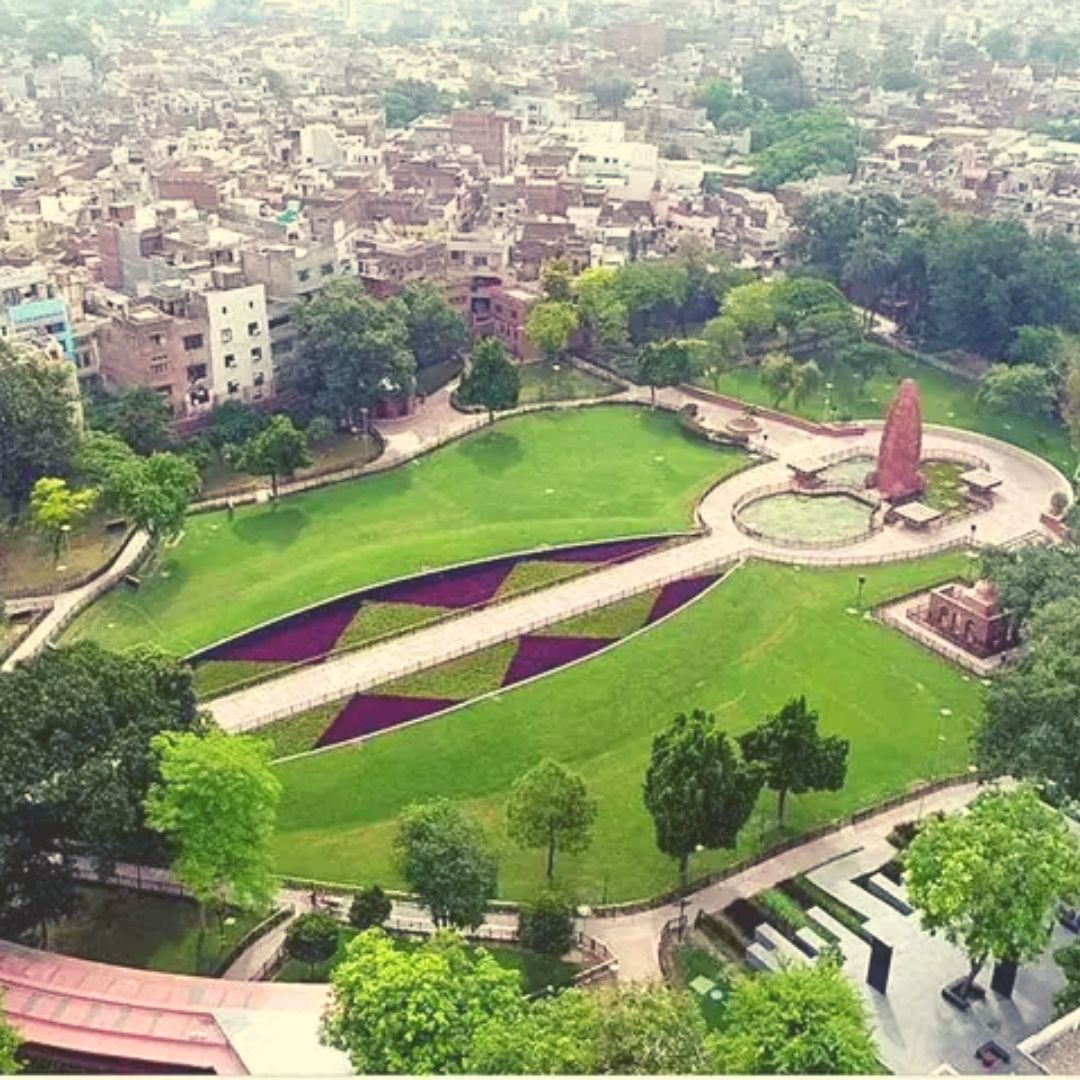
Image Credits: ANI
Jallianwala Bagh Revamp Sparks Outrage Among Historians, Politicians; Call It Insult To Martyrs
Writer: Tashafi Nazir
For most people, journalism sounds hectic and chaotic. For her, it's a passion she has been chasing for years. With an extensive media background, Tashafi believes in putting efforts on presenting a simple incident in the most interesting way.
Punjab, 1 Sep 2021 11:41 AM GMT
Editor : Palak Agrawal |
Palak a journalism graduate believes in simplifying the complicated and writing about the extraordinary lives of ordinary people. She calls herself a " hodophile" or in layman words- a person who loves to travel.
Creatives : Tashafi Nazir
For most people, journalism sounds hectic and chaotic. For her, it's a passion she has been chasing for years. With an extensive media background, Tashafi believes in putting efforts on presenting a simple incident in the most interesting way.
The entrance used by the British forces led by Brigadier General REH Dyer to enter into Jallianwala Bagh has now been converted into a gallery. Moreover, the narrow pass British soldiers blocked to prevent Indians from escaping has also been revamped.
Prime Minister Narendra Modi, on Saturday, August 28, virtually inaugurated the renovated complex of Jallianwala Bagh Memorial, stating that it was ' the responsibility of every country to preserve its history'.
The entrance used by the British forces led by Brigadier General R.E.H Dyer to enter into Jallianwala Bagh has now been converted into a gallery. Moreover, the narrow pass British soldiers blocked to prevent Indians from escaping has also been revamped. The place that stood witness to a gory bloodbath has allegedly been glamorised by installing colourful lights and murals.
The development has stirred a row with politicians, historians, and the general public objecting over the loss of historical importance of the passage that led to the Bagh. Some were irked by the light and sound show at the tragic site, while others accused the government of sabotaging the place.
Historians Disappointed
Historian Kim A Wagner, also an author of "Amritsar 1919: An Empire of Fear and the Making of a Massacre", took to Twitter and called it a "part of the general Disneyfication of the old city of Amritsar".
"Devastated to hear that Jallianwala Bagh, site of the Amritsar Massacre of 1919, has been revamped - which means that the last traces of the event have effectively been erased. This is what I wrote of the memorial in my book, describing a space that has now itself become history," he tweeted.
Prominent historian S Irfan Habib termed it as the corporatisation of monuments, where they end up as modern structures, losing the heritage value. "Look after them without meddling with the flavours of the period these memorials represent," he said.
Insult To Martyrs
The opposition slammed the central government saying that the leaders have no knowledge as such about Jallianwala Bagh's history and significance.
Terming it as an 'insult to martyrs', Congress leader Rahul Gandhi said that those who do not know the meaning of martyrdom could inflict such an insult. "I'm a martyr's son. I will not tolerate this at any cost. We are against this indecent cruelty," he added.
However, Punjab Chief Minister Amarinder Singh chose to disagree and said that the renovated memorial 'looked nice' to him.
Congress leader and Punjab government spokesperson Dr Raj Kumar Verka said that they should have avoided artificial things. "Jallianwala Bagh is not any fiction but a reality. Martyrs' Well and Jallianwala Bagh's soil speaks volumes about its sacrifices. Artificial things should have been avoided," he said, reported India Today.
BJP Backs The Decision
Hitting back at Rahul Gandhi, BJP leader Vineet Joshi advised him to drop the names of Gandhi's family members from various institutions and instead rename them with martyrs' names. He also accused the party of crying foul as Rahul Gandhi's name had been removed from the trust of Jallianwala Bagh.
"Congress should tell people how many schemes and institutions they have dedicated to the martyrs' and freedom fighters. More than 300 of them have been named after Jawaharlal Nehru, Indira Gandhi and Rajiv Gandhi. The party is just doing politics," Joshi said, as quoted by India Today.
What Happened On April 13, 1919?
Also known as the Amritsar Massacre, the Jallianwala Bagh massacre took place on April 13, 1919. A large but peaceful crowd were protesting against the arrest of pro-Indian independence leaders Dr Saifuddin Kitchlu and Dr Satya Pal. In response, the British Brigadier-General Dyer surrounded the Bagh along with his forces and blocked the exit on one side, while buildings enclosed the other three sides.
After blocking the exit, Dyer ordered his troops to shoot at the crowd. The soldiers kept on firing until their ammunition exhausted, even as protestors tried to flee. The number of those people killed varied between 391 and thousand. Over 1,200 other people were estimated to be injured, of whom 192 were critical.
EAlso Read: After Hockey, Odisha Govt To Power Indian Rugby Team For Next 3 Yrs
 All section
All section














